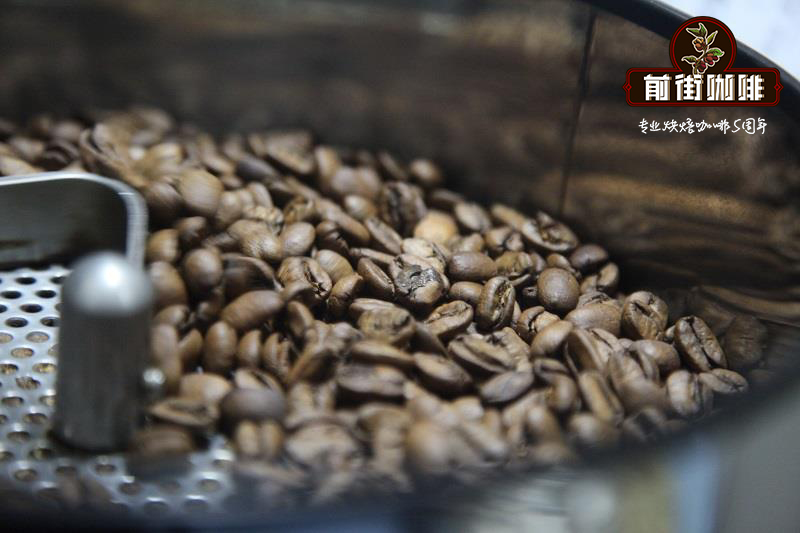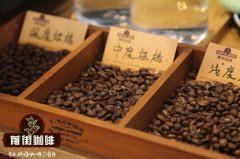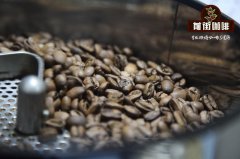How should a coffee shop choose coffee beans? Which brand of coffee beans is commonly used in coffee shops?

Professional coffee knowledge exchange more coffee bean information please follow the coffee workshop (Wechat official account cafe_style)
Single boutique coffee beans _ coffee brands in boutique coffee producing areas _ types and classification of coffee beans
In fact, there are three main points to look at:
1. Brand (brand represents stability) the brand is not limited to commercial beans such as illy Lovesa, but more freshly roasted boutique coffee beans.
2. Price: price is a very important thing for every merchant, and only high performance-to-price ratio is what merchants choose to buy.
3. Taste: most of the time, the taste is for the guests, as long as you know whether most people in your store need chocolate, nutty flavor or fruity flavor.
The most basic execution of doing business is to make use of the existing conditions to solve the to-do list one by one. For example, the Internet to search, contact, screening for the location of the store logistics convenient suppliers.
If you like coffee yourself, if you drink too much and buy more, you will have channels and know the price. Or some of the partners or employees know how to judge whether the material is good or bad. According to your positioning needs, purchase the right raw materials at the right price.
In addition to joining, there are also people who will find professional people or companies to help open stores, materials, equipment, personnel training can be done at one time.
Everyone knows that in the coffee industry, the gross profit margin is still high. So if the scale is not very large, there is really no need to save money on raw materials such as coffee beans. Or you think: when you are surrounded by peers who don't pay attention to the cost of raw materials, you can stand out, and on the other hand, if others don't value you, you will be excluded from the market.
Generally speaking, how to choose coffee beans depends on the positioning of the coffee shop itself. If your coffee shop pursues cost control, espresso is usually made with commercial beans. If you make boutique coffee and provide you with authentic freshly ground coffee, then boutique coffee beans will be the best choice, and the varieties that are usually the most commonly used are Brazil, Colombia, Blue Mountain, Yega Xuefei and Manning.
Commercial coffee beans mixed with coffee
When coffee is mixed from a variety of beans, the baker will bake two or four kinds of coffee beans at the same time, all from different producing areas and growing countries, and each kind of coffee is roasted in a different way.
To provide your favorite coffee flavors, they are all mixed at different rates (roasting and blending). Coffee is a natural product from plants, so it is a living and constantly changing thing. Every time you roast coffee, you also have to taste it, mixing about 2-3 different kinds of coffee beans. To achieve a balanced flavor and delicious taste, this is indeed a technical task.
Colombia, Nicaragua, Brazil-chocolate, nuts, caramel
Ethiopia, Tanzania, Rwanda-sweet, sour, nutty, lemon, sometimes sour
India, Indonesia, Papua New Guinea-botanical, spicy, salty
The industry generally uses low-acidity blended coffee, such as Vietnam Luodou, Brazil, Yunnan, Mantenin, Guatemala and other commercial grade beans. Italian coffee beans are usually deep-roasted, medium-deep roasted, and the oil will be good. Suitable for espresso, lattes and other milk coffee.
An ideal Espresso should be able to strike a balance between the various elements, taste bright, and feel sweet but not bitter in the throat after drinking it.
To put it more specifically, it should have a moderate sour taste, bitter taste, sweet taste, rich taste, solid and mellow consistency, persistent, refreshing and sour taste like a citrus.
Extract a cup of espresso
▼
-Water temperature | 93-94 ℃
-pressure | 9 ba
-freshly ground coffee powder | 20g (using electronic scale)
-Total weight of coffee | 40g (using electronic scale)
-brewing time | 25-28 seconds (using timer)
Boutique coffee beans Ethiopia
Ethiopia is an agricultural country with a history and tradition of coffee origin. Yega Chuefei is one of the producing areas south of Sidamo, with about 12 million people engaged in coffee production and is a major exporter of Arabica coffee beans in Africa. The high-quality coffee here is of excellent quality and is worth looking for. It has a soft taste, with wild flavor of wine, and slightly sour taste, unforgettable after drinking.
If you are very fond of African beans, it should be easy to find that Ethiopian beans are generally of different sizes and have significantly lower evenness than those in Kenya. Whether it is Yega Xuefei or Sidamo, whether it is washing or sunlight, sometimes the same batch of coffee beans can be seen to be significantly different in baking color and particle size. Nearly 2000 coffee varieties have been recorded in Ethiopia, including 1927 native varieties and 128 imported varieties. So just by looking at the appearance, Esther's coffee variety is "Grand View Garden", which has everything, long, short, thin, fat.
[Yechuefi aricha, Ethiopia] (light sun baking)-light fermented wine, sweet orange, spices, honey sweet, Aricha processing plant sun Ariga is the highest grade of G1 by ECX, from raw bean appearance, consistency, freshness to dry aroma and flavor are excellent.
[Yega Sherphine Woka, Ethiopia] (slightly roasted with water)-lemon, kumquat and white grape juice, the Waka Cooperative joins the famous Yejia Sheffield Coffee Farmers Cooperative Union to produce quality water washing Ethiopia can reach the highest level of G1.
Boutique coffee beans Colombia
Colombia is one of the largest producers of high-quality coffee in the world, a bright pearl in the world coffee map and a coffee land blessed by God. Arabica coffee is grown on a steep slope at an altitude of 800,000m above sea level. It is hand-picked and washed.
Colombian coffee has a balanced flavor and a smooth taste, just like a gentleman in coffee. He has a wide range of producing areas, such as Medellin, Armenia and Manizales, which are commonly referred to as "MAM".
Colombia's boutique bean producing areas are mainly in the south, more than 1500 meters above sea level, including San Augustin, Huila in Huilan province, Popayan, Cauca in Cauca province, Nari ñ o province, and Tolima province, all of which have delicate sour and raspberry aromas, caramel aromas and full sweetness.
[Cauca Cauca] is a certified coffee producing area in Colombia, with an average altitude of 1758m-2100m. 80% of Cauca province is mountainous. The soil in the producing area has adequate nutrition for coffee growth. Low temperature at night and relatively high altitude slow down the growth of coffee. Coffee in Cauca producing areas has high acidity and commendable sweetness.
Boutique coffee beans Sumatra
Coffee cultivation in Mantenin, Sumatra, began in the 18th century, when it was planted near Aceh province on the north side of Lake Tawar. For a few days, most of the Sumatran coffee area is located in the south of Lindong, Subu and Takengon coffee. Sumatran coffee is not based on producing areas because there is little difference between planting areas, but picking and processing methods have a great influence on the flavor of Sumatra coffee. Indonesian coffee is mainly produced in Sumatra, Java and Sulawesi, of which "Mantenin" produced in Sumatra is the most famous.
Lintong is also known as Sumatran Coffee, Lake Tawa at the north end can be called Aceh Coffee or Lake Tawa Coffee, and the area between Lindong Coffee and Lake Toba can be called Manning.
Mainly from two producing areas:
One is the Aceh producing area, which includes five producing areas: Tawa Lake, Gaiyou Mountain, Gaiyou nationality, Yaziman and Takangong Manning.
The other is the producing area of North Sumatra, which is composed of four producing areas: Lake dopa, Lindong, Mandainin and Badak.
Manning is one of the most suitable coffee beans for deep roasting in the world. One of the famous reasons is that its own characteristics do not disappear after deep roasting. Mantenin's thick flavor and low acidity make it very popular in Asia. In fact, the high quality mantenin is also very suitable for medium and shallow baking, which can show a good fruit flavor at this degree of baking.
[Mantenin, Sumatra, Indonesia] (deep baking in traditional wet planing)-baked toast, nuts, pine, caramel, herbs, Mandarin coffee is produced in Lake dopa in Sumatra Province and Lake Tawa in Aceh. This is the famous "two lakes Shuangman", with a hilly fragrance that is unique to the earthy flavor of the primeval forest.
The aroma of Golden Manning Coffee is rich and thick, with clear high-quality acidity, high balance, sometimes nutty, high sweetness, rich and mellow flavor: baked toast, pine, caramel, cocoa, slightly herbaceous native flavor.
Boutique coffee beans Brazil
The largest coffee producer, which accounts for 1/3 of the world's coffee consumption, accounts for 1/3 of the world's coffee consumption and has a place in the global coffee market, although Brazil faces several times more natural disasters than other regions. but its acreage is enough to make up for it.
There are many kinds of coffee here, but its industrial policy is large and cheap, so there is not much premium coffee, but it is a good choice for mixing other coffees.
One of the most famous is Sandos Coffee, which tastes mellow and neutral. It can be boiled directly or mixed with other kinds of coffee beans to form a comprehensive coffee. It is also a good choice.
Other kinds of Brazilian coffee, such as Rio and Parana, can be produced in large quantities because they do not need too much care. Although the taste is rough, it is a kind of high-quality and inexpensive coffee, which has its own standards because it is distributed all over the country and varies in quality (NO.2-NO.8 according to the number of sundries, NO.13--NO.19 according to the size of beans, and six grades according to taste). Almost all Arabica species are of good quality and stable in price. The most famous ones are "Brazil Santos", Syracuse and Minas, which are the necessities of mixed and single bean coffee and are familiar to the public.
Taste characteristics: mild, bitter medium, soft aroma.
The best frying degree: medium baking, medium deep baking.
Brazilian flavor characteristics: comfortable sweet and bitter taste, the entrance is very smooth; with a hint of grass, the fragrance is slightly bitter; smooth and smooth, the aftertaste can be pleasant
2017 Coffee Bean purchase Price-introduction of Coffee prices in various countries
Important Notice :
前街咖啡 FrontStreet Coffee has moved to new addredd:
FrontStreet Coffee Address: 315,Donghua East Road,GuangZhou
Tel:020 38364473
- Prev

The most objective way to evaluate coffee beans-choose coffee beans from "tasting"
Professional coffee knowledge exchange more coffee bean information please follow coffee workshop (Wechat official account cafe_style) single boutique coffee beans _ coffee bean brands in boutique coffee producing areas coffee bean types and classification many books introduce how to choose coffee beans, most of them are required to look at beans, smell beans, touch beans and even bite beans, which are important but prerequisites
- Next

How do coffee shops choose coffee beans? Coffee shop commonly used coffee beans which brand is good?
Professional coffee knowledge exchange More coffee bean information Please pay attention to coffee workshop (Weixin Official Accounts cafe_style) single product boutique coffee beans_boutique coffee producing area coffee bean brand_coffee bean type and classification In fact, there are three main points: 1. Brand (brand represents stability) Brand This is not limited to commercial beans such as illy Le Visa, more choices are some freshly roasted beans
Related
- Guji coffee producing area of Guji, Ethiopia: Humbela, Shakiso, Wulaga
- What is the most expensive variety of Qiloso in BOP multi-variety group?
- How to store the coffee beans bought home?
- Why are Yemeni coffee beans so rare now?
- Ethiopian Sidamo all Red Fruit Sun Sun Santa Vini Coffee beans
- SOE is mostly sour? What does it mean? Is it a single bean? what's the difference between it and Italian blending?
- Is Italian coffee beans suitable for making hand-brewed coffee?
- How to choose coffee beans when making cold coffee? What kind of coffee beans are suitable for making cold coffee?
- Just entered the pit to make coffee, what kind of coffee beans should be chosen?
- Can only Japan buy real Blue Mountain Coffee? What are authentic Jamaican Blue Mountain coffee beans?

